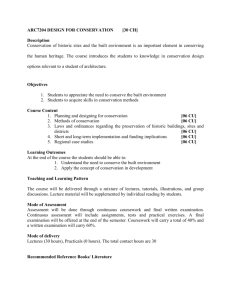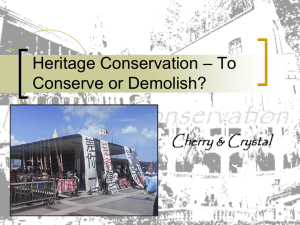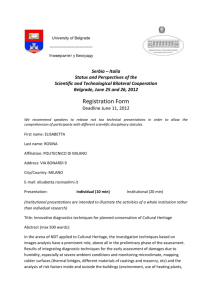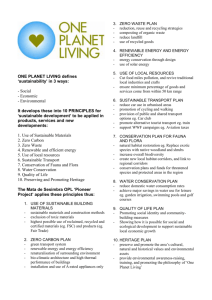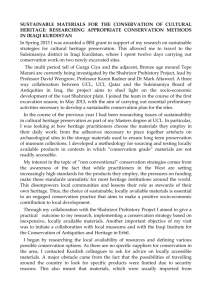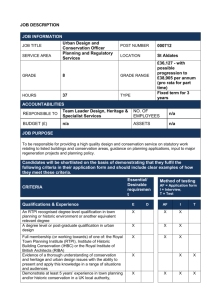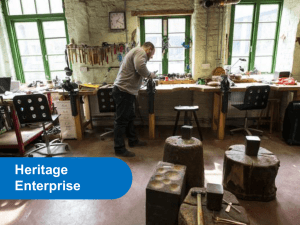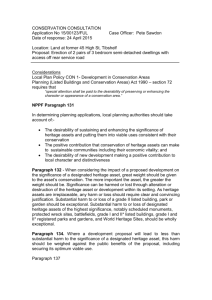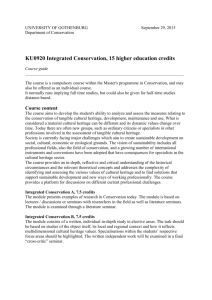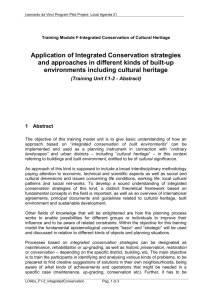Impact Assessment as an entry point for an active conservation
advertisement
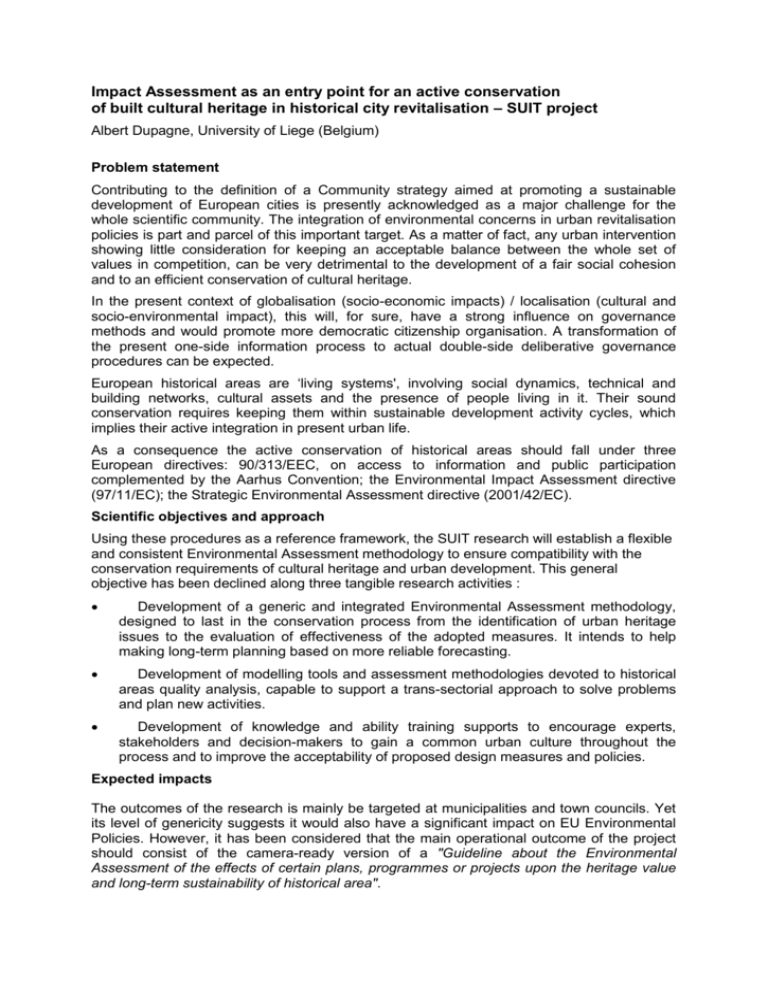
Impact Assessment as an entry point for an active conservation of built cultural heritage in historical city revitalisation – SUIT project Albert Dupagne, University of Liege (Belgium) Problem statement Contributing to the definition of a Community strategy aimed at promoting a sustainable development of European cities is presently acknowledged as a major challenge for the whole scientific community. The integration of environmental concerns in urban revitalisation policies is part and parcel of this important target. As a matter of fact, any urban intervention showing little consideration for keeping an acceptable balance between the whole set of values in competition, can be very detrimental to the development of a fair social cohesion and to an efficient conservation of cultural heritage. In the present context of globalisation (socio-economic impacts) / localisation (cultural and socio-environmental impact), this will, for sure, have a strong influence on governance methods and would promote more democratic citizenship organisation. A transformation of the present one-side information process to actual double-side deliberative governance procedures can be expected. European historical areas are ‘living systems', involving social dynamics, technical and building networks, cultural assets and the presence of people living in it. Their sound conservation requires keeping them within sustainable development activity cycles, which implies their active integration in present urban life. As a consequence the active conservation of historical areas should fall under three European directives: 90/313/EEC, on access to information and public participation complemented by the Aarhus Convention; the Environmental Impact Assessment directive (97/11/EC); the Strategic Environmental Assessment directive (2001/42/EC). Scientific objectives and approach Using these procedures as a reference framework, the SUIT research will establish a flexible and consistent Environmental Assessment methodology to ensure compatibility with the conservation requirements of cultural heritage and urban development. This general objective has been declined along three tangible research activities : Development of a generic and integrated Environmental Assessment methodology, designed to last in the conservation process from the identification of urban heritage issues to the evaluation of effectiveness of the adopted measures. It intends to help making long-term planning based on more reliable forecasting. Development of modelling tools and assessment methodologies devoted to historical areas quality analysis, capable to support a trans-sectorial approach to solve problems and plan new activities. Development of knowledge and ability training supports to encourage experts, stakeholders and decision-makers to gain a common urban culture throughout the process and to improve the acceptability of proposed design measures and policies. Expected impacts The outcomes of the research is mainly be targeted at municipalities and town councils. Yet its level of genericity suggests it would also have a significant impact on EU Environmental Policies. However, it has been considered that the main operational outcome of the project should consist of the camera-ready version of a "Guideline about the Environmental Assessment of the effects of certain plans, programmes or projects upon the heritage value and long-term sustainability of historical area".



